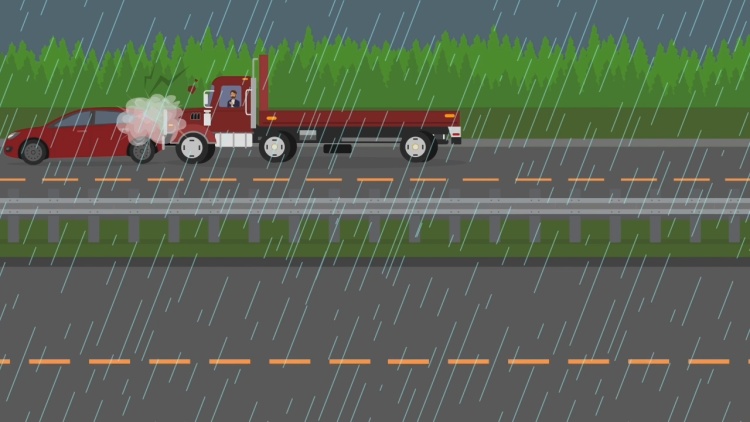Taylor v. Jackson
Pennsylvania Commonwealth Court
643 A.2d 771 (1994)
- Written by Craig Conway, LLM
Facts
Early one evening, Klopp (defendant) was driving her vehicle on an interstate highway when she suddenly stopped in response to a heavy rainstorm. Immediately behind Klopp was a tractor-trailer driven by Jackson (defendant), who jackknifed in order to avoid a collision with Klopp. Jackson’s truck subsequently blocked both lanes of the highway. Traffic immediately began to back up. Minutes later, an electric utility line owned by Pennsylvania Power and Light Company (PPL) (defendant) that had been strung across the highway fell, for unknown reasons, and came to rest on the ground across all highway lanes. Shortly thereafter, a second crash occurred, as vehicles were coming to a stop behind Jackson’s truck. Approximately one-half mile from the initial accident, a tractor-trailer driven by Whatley (defendant) struck the rear of a car operated by Shroff. Watley’s truck then jackknifed and came to a rest against a guardrail. Then, a state trooper arrived to reroute traffic. Two hours later, a third crash occurred when Questore (defendant) drove his delivery truck into the rear of a car, driven by Franz with Taylor (plaintiff) as a passenger. Questore also struck a vehicle driven by Lindow (plaintiff). Taylor and Lindow suffered serious injuries. Each plaintiff filed suit against all defendants. The complaints were then consolidated into a single action. The trial court granted the defendants’ motions for summary judgment, concluding that no reasonable jury could find that Klopp’s initial negligent act was the proximate cause of the plaintiffs’ injuries nearly two hours later. The plaintiffs appealed.
Rule of Law
Issue
Holding and Reasoning (Newman, J.)
What to do next…
Here's why 899,000 law students have relied on our case briefs:
- Written by law professors and practitioners, not other law students. 47,000 briefs, keyed to 994 casebooks. Top-notch customer support.
- The right amount of information, includes the facts, issues, rule of law, holding and reasoning, and any concurrences and dissents.
- Access in your classes, works on your mobile and tablet. Massive library of related video lessons and high quality multiple-choice questions.
- Easy to use, uniform format for every case brief. Written in plain English, not in legalese. Our briefs summarize and simplify; they don’t just repeat the court’s language.







